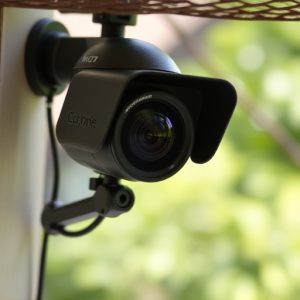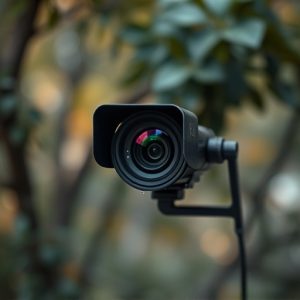Light Reflection Technique for Spy Camera Detection: Battery Operated Nanny Cam Systems
Spy camera detection utilizes light reflection to identify hidden cameras, including battery-operate…….
Spy camera detection utilizes light reflection to identify hidden cameras, including battery-operated nanny cams, by analyzing unique pattern deviations in reflections. This technology significantly enhances privacy protection in high-security settings, making it difficult for unauthorized devices to operate unnoticed. While effective, challenges exist in distinguishing genuine reflections from those produced by hidden cameras, leading to inconsistent results. Future advancements in sensors and machine learning algorithms promise improved spy camera detection accuracy, especially for high-risk areas like government facilities and private homes with battery-operated nanny cam systems.
“Unveiling hidden surveillance: Exploring Light Reflection as a Spy Camera Detection Method delves into the innovative technique of using light reflection to identify covert cameras, particularly in battery-operated nanny cam systems. This approach leverages the principles of basic light reflection to expose tiny visual cues often overlooked by the naked eye. By understanding how these systems operate, we can uncover their strengths and weaknesses, while also considering future directions in enhancing spy camera detection technologies.”
- Understanding Spy Camera Detection: The Basics of Light Reflection
- How Battery Operated Nanny Cam Systems Utilize Light Reflection
- Advantages of Light Reflection in Spy Camera Detection
- Discrepancies and Challenges in the Light Reflection Technique
- Future Applications: Enhancing Spy Camera Detection Technologies
Understanding Spy Camera Detection: The Basics of Light Reflection
Spy camera detection relies on a fundamental principle: light reflection. This technique is particularly useful for identifying hidden cameras, such as battery-operated nanny cam systems, which are often discreetly placed to capture footage unnoticed. By projecting a known light pattern onto a surface, any reflective or irregular behavior can indicate the presence of an unseen camera lens. The method works because digital camera sensors reflect light differently than human eyes do; even tiny deviations in reflection can be detected by analyzing the light’s path and intensity after it bounces off potential camera surfaces.
This basic concept has evolved into sophisticated systems designed to counter surveillance technology. By using specialized equipment that generates unique light patterns, experts can now scan areas for suspicious reflections, pinpointing the exact location of hidden cameras. This approach is especially valuable in high-security settings where unauthorized recording devices pose significant risks. With advancements in spy camera detection techniques, individuals and organizations alike can better protect their privacy and sensitive information from prying eyes, including those lurking behind seemingly innocuous battery-operated nanny cam systems.
How Battery Operated Nanny Cam Systems Utilize Light Reflection
Battery Operated Nanny Cam Systems have revolutionized home security, offering a discrete and convenient way to monitor activities. These systems rely on advanced technology to capture footage while remaining virtually undetectable. One of their key features is the utilization of light reflection for optimal performance. By strategically positioning sensors and lenses, these cameras can analyze ambient light conditions and use reflections to enhance image quality. This technique ensures clear video even in low-light environments, making it an effective tool for round-the-clock surveillance.
When a potential intruder enters the camera’s field of view, the battery-powered system activates, capturing footage through the reflection of available light sources—such as sunlight or artificial lighting. This reflexion technique not only allows for better visibility but also helps in reducing false triggers caused by rapid movements or sudden changes in illumination, ensuring that only relevant activities are recorded.
Advantages of Light Reflection in Spy Camera Detection
The spy camera detection light reflection technique leverages the power of natural and artificial light to reveal hidden cameras, offering several advantages over traditional methods. By using light reflection, this method can non-invasively and effectively detect covert recording devices like battery-operated nanny cam systems. It is particularly useful in scenarios where direct visual inspection is impossible or impractical, ensuring privacy while maintaining security.
Moreover, the approach is versatile and adaptable to various environments. Whether it’s natural sunlight reflecting off a lens or strategically placed artificial lights, this technique can be employed discreetly and efficiently. This makes it an appealing solution for home, office, and public space surveillance, providing peace of mind and enhancing overall security without compromising aesthetics or privacy concerns.
Discrepancies and Challenges in the Light Reflection Technique
The light reflection technique for spy camera detection is a promising approach, but it’s not without its challenges and discrepancies. One of the primary issues is that it can be difficult to differentiate between genuine light reflections and those created by hidden cameras. Modern battery-operated nanny cam systems, for instance, are designed to be nearly invisible and often employ advanced lighting techniques to blend in with their surroundings, making them harder to detect using traditional reflection methods.
Furthermore, the technique’s effectiveness depends heavily on the angle of incidence and the quality of light sources. Reflections may not always be consistent or visible, especially in environments with dynamic lighting conditions or where the camera is positioned at unusual angles. These variations can lead to false positives or negatives, highlighting the need for continuous improvement in detection methods to keep up with evolving surveillance technology.
Future Applications: Enhancing Spy Camera Detection Technologies
The ongoing evolution of spy camera detection technologies opens up exciting possibilities for future applications, particularly in enhancing security and privacy measures. One promising area of development is the integration of advanced sensors and machine learning algorithms to create more sophisticated detection systems. By leveraging artificial intelligence, these systems can analyze visual data in real-time, identifying subtle patterns and anomalies that might indicate the presence of hidden cameras. This technology could be particularly useful in high-risk environments, such as government facilities, corporate headquarters, or even private residences, including battery-operated nanny cam systems, to ensure comprehensive security.
Additionally, future applications may include the use of advanced light reflection techniques, like those discussed in this article, to detect and locate hidden cameras more accurately. As technology advances, these methods could become more accessible and user-friendly, empowering individuals and organizations alike to protect their privacy and data security. This evolution suggests a future where spy camera detection is an integral part of maintaining a safe and secure digital environment.
The light reflection technique, a promising method for spy camera detection, has shown significant potential, particularly in battery-operated nanny cam systems. By analyzing light patterns and reflections, this technology can uncover hidden cameras, offering enhanced security. However, challenges remain, such as environmental factors and false positives. Future advancements in materials and algorithms will further refine this approach, making it a valuable tool to combat the growing concern of surveillance devices. Integrating these innovations into existing battery-operated nanny cam systems promises improved privacy protection for homes and businesses alike.


